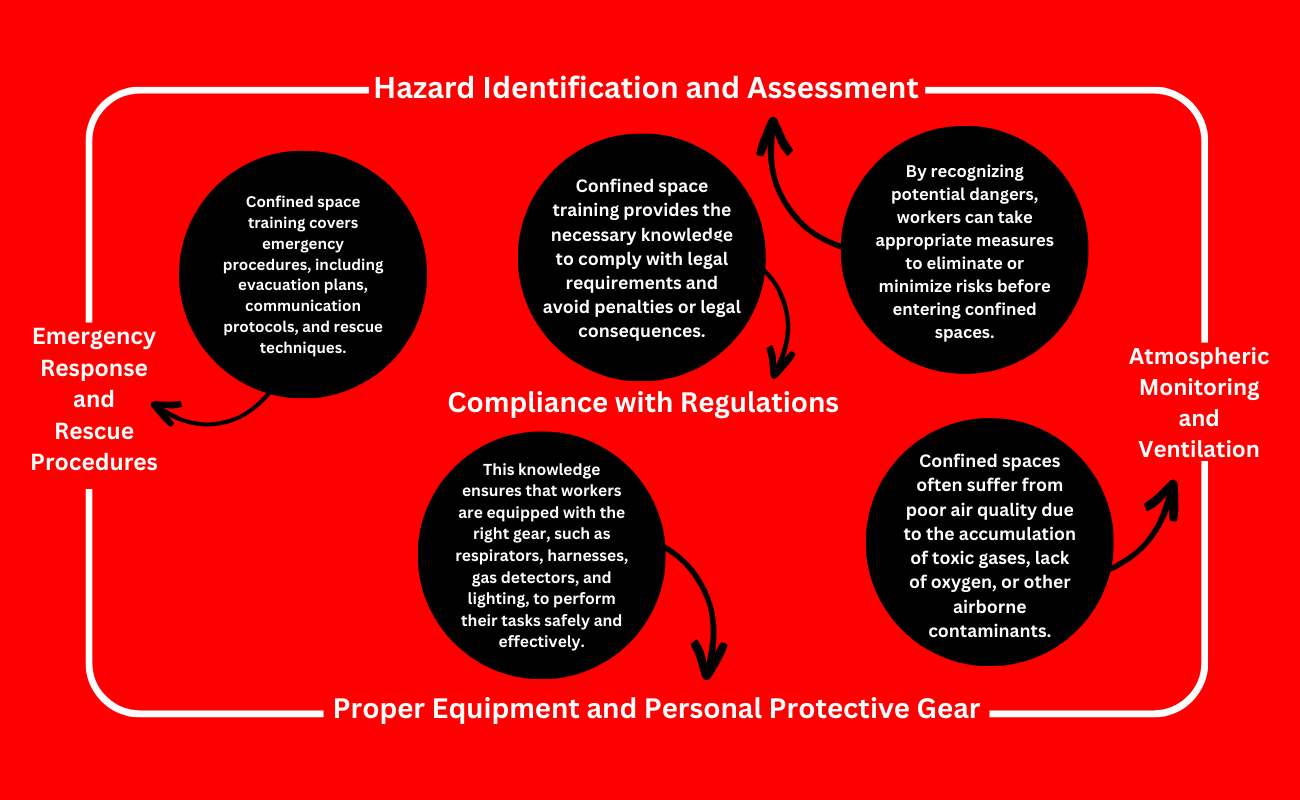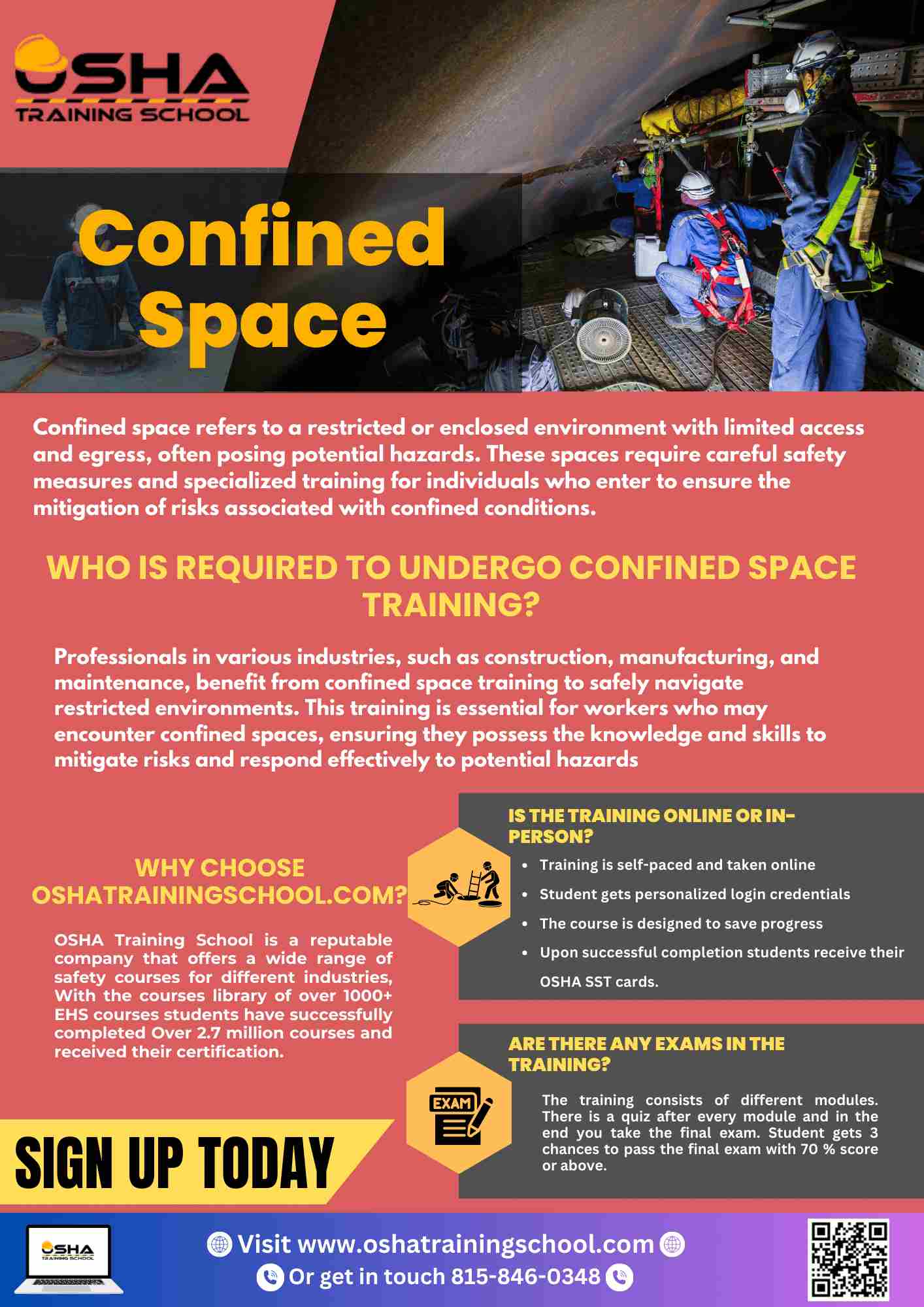
Important Fire Extinguisher Tips
Fire extinguishers are commonly found in workplaces, homes, and public spaces. But what's the point if...


The construction industry is an essential sector that plays a significant role in shaping the infrastructure of our society. While construction projects provide employment opportunities and drive economic growth, they also come with inherent risks. Among these risks, working in confined spaces poses a particular challenge that demands specialized training and precautions. In this blog, we will explore the importance of confined space training in the construction industry and how it helps protect workers from potential hazards.
Confined spaces are areas that have limited access points for entry and exit, with inadequate ventilation and potential hazards. These spaces can be found in various construction settings, such as tunnels, tanks, sewers, pipelines, and crawl spaces. Due to their restricted nature, confined spaces pose significant risks to workers, including exposure to toxic substances, oxygen deficiency, entrapment, falls, and fire hazards.

Confined space training plays a crucial role in mitigating risks and ensuring the safety of construction workers. Here are several reasons why this specialized training is essential:
1. Hazard Identification and Assessment:
Confined space training equips workers with the knowledge to identify potential hazards and evaluate risks associated with specific work environments. By recognizing potential dangers, workers can take appropriate measures to eliminate or minimize risks before entering confined spaces.
2. Proper Equipment and Personal Protective Gear:
Confined space training educates workers on the correct use of personal protective equipment (PPE) and specialized tools required for working in confined spaces. This knowledge ensures that workers are equipped with the right gear, such as respirators, harnesses, gas detectors, and lighting, to perform their tasks safely and effectively.
3. Emergency Response and Rescue Procedures:
In the event of an emergency or accident within a confined space, workers must be trained on proper response protocols. Confined space training covers emergency procedures, including evacuation plans, communication protocols, and rescue techniques. This training ensures that workers can respond swiftly and efficiently to protect themselves and their colleagues in life-threatening situations.
4. Atmospheric Monitoring and Ventilation:
Confined spaces often suffer from poor air quality due to the accumulation of toxic gases, lack of oxygen, or other airborne contaminants. Confined space training teaches workers how to conduct atmospheric monitoring using gas detectors and other devices, as well as how to implement ventilation measures to improve air quality and reduce the risks associated with confined spaces.
5. Compliance with Regulations:
Governments and regulatory bodies impose strict guidelines and regulations to protect workers in confined spaces. Employers in the construction industry must adhere to these regulations and ensure that their workers are trained and equipped to work safely. Confined space training provides the necessary knowledge to comply with legal requirements and avoid penalties or legal consequences.


Fire extinguishers are commonly found in workplaces, homes, and public spaces. But what's the point if...

Working at heights can be dangerous, especially for jobs like construction, window cleaning, or telecommunications...

Scaffolds are the backbone of construction projects, providing a stable platform for workers to...

Combustible dust refers to fine particles that can ignite and cause explosions when they're in the air...

In our daily lives, we see signs and symbols everywhere that guide us, inform us, and keep us safe. From traffic signs on the roads to hazard...

In our daily lives, we are constantly surrounded by potential hazards that we often overlook. One such danger...

A hand pallet jack, also known as a pallet truck, is a manual device designed to lift and move heavy...

Working at an oilfield could potentially expose you to hydrogen sulfide (H2S). It has a faint smell of rotten eggs...

Industrial ergonomics is the practice of designing workplace environments that match the capabilities and...

Safety is important in any field, especially in construction, where mistakes can have serious...

As we continue to push the boundaries of architectural design, it’s clear that concrete and masonry will...

Excavation and trenching are some of the most dangerous tasks in construction work. The moment...

The importance of environmental responsibilities has to be emphasized. As we observe the increasing...

Hot work refers to any activity or process that creates a source of ignition, such as flame, heat, or spark...

Harassment in the workplace can happen from different people...

Driving is a big part of many jobs. Whether it’s commuting to meetings, making deliveries, or traveling...

In the construction, mining, and demolition industries, controlled explosions are commonly used for...

In today’s fast-paced world, where maintaining high productivity is a continual requirement, effective supervision plays a pivotal...

A learning management system, or LMS, is a platform or software application designed to...

In the present time, Drugs and alcohol are making a big impact on society, extending into...

Working with electrical equipment comes with serious hazards, one of these...

Corrosive materials are present in almost every workplace. From...

Crane operator safety training deals with procedures and measures...

The safety of employees is paramount for any company and employer. It’s also the...

Hand and Power Tools are common parts of our routine lives and are...

Truckers face a high risk of injury and death in their line of work because they spend long...

A forklift is a powered industrial truck with twin forks attached to the front that can be raised and lowered...

An aerial lift is a type of heavy equipment designed to lift individuals...

Asphalt is one of the most common materials used for road paving,...

In today's bustling industries,...

In today's rapidly evolving world, workplace safety is a critical aspect of...

Scissor lifts are versatile aerial work platforms widely used in various industries, including construction,...

Emergencies and disasters can catch people off guard, particularly when they have a personal impact on...

OSHA unveiled a national emphasis...

In the pursuit of ensuring safe and healthy working environments, the...

In today's world, maintaining a safe and healthy work environment is...

When it comes to workplace safety, fall protection is a critical aspect that...

Working in the construction industry...

The construction industry is an...

In the bustling world of construction, ladders are indispensable tools,...

The 40-Hour Site Safety training and...

OSHA 10 and OSHA 30 are both training programs offered by the Occupational Safety...

As the winter season blankets the world in frosty temperatures,...

As the temperatures rise and global warming becomes an increasingly...

Ensuring a safe working environment is paramount for any organization,...

Asbestos, a naturally occurring mineral known for its heat resistance...

In any workplace, ensuring the safety and well-being of employees is of...

The SST card is a certification/proof that you have successfully completed your training with an authorized...

Creating a safe and inclusive work environment is crucial for the well-being and productivity...

Transporting hazardous materials is a critical and necessary activity in our...

Under the local law of 196 of 2017 (NYC department of buildings), Supervisors at job sites with...

“SST” is site safety training required by NYC Local Law 196 of 2017 for construction workers...

In any workplace, ensuring the safety and well-being of employees is paramount. Accidents and medical...